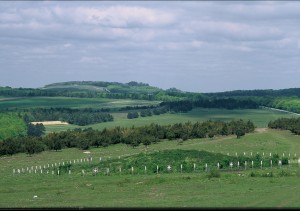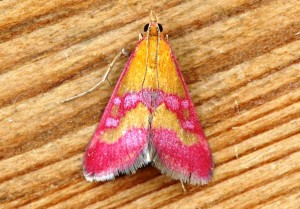I'm Olly Howells and I work in a team of eight DIO ecologists who cover the whole of the UK and overseas. We work alongside staff with expertise in archaeology, public access, forestry, environmental planning and other specialist areas. My time is split evenly between advising on land management issues and supporting development projects.
The MOD estate covers roughly one per cent of the UK land area and it's hugely important for wildlife and nature conservation. The history of many MOD sites means they support large areas of semi-natural habitat, which haven't been improved for agriculture or developed in other ways. Consequently, the estate supports a diverse range of legally protected species and designated sites, such as Sites of Special Scientific Interest (SSSI).

The MOD is subject to the same legal obligations and planning procedures as any other landowner or developer. DIO, therefore, needs its own ecologists who understand the legal framework, military training requirements and the potential impact MOD activities can have on different species and habitats.
A Typical Day
Every day is completely different. Most weeks I'm out of the office at least two or three days. A day in the office can include writing up an Ecological Impact Assessment or providing advice over the phone about bats or other protected species.
I might be meeting Army officers, farmers or staff from other government departments to look at habitat management on an SSSI, like conservation grazing or heathland restoration. On the other hand, I might be doing a botanical survey on some sand dunes in Northern Ireland because we want to build a new Forward Operating Base. I might even be capturing Great Crested Newts in an emergency water supply tank at an RAF airfield, so we can move them to make way for a new hangar. I have my fair share of office time, writing reports and responding to e-mails, but it's always varied and interesting.
Plus Points
As well as working at some fantastic sites, the best thing about the job is the range of people I deal with and the scale of the projects. I work with estate management teams, contractors and project managers across my regions and I enjoy being a part of numerous small teams dealing with unique issues and challenges.
As a specialist the advice I provide is essential to make projects work and I find my input is valued even if it's not always convenient.
The scale of the work is also rewarding. I see my colleagues delivering positive conservation projects across large tracts of land like Salisbury Plain or Stanford Training Area and I realise there are very few other organisations where we could have such a positive influence.
Incredible Wildlife
At the moment I cover a large area that includes SW England, Wales and Northern Ireland. That means I'm lucky enough to work regularly at some of the best wildlife sites in the UK and hopefully I've made a contribution to keeping them that way. I never tire of working at sites like Lulworth Ranges, in Dorset, Pendine, in Carmarthenshire, Predannack Airfield, in Cornwall and Magilligan, in Northern Ireland. If I had to pick a favourite site it would probably be Cape Wrath on the north coast of Scotland. The remote location, incredibly high sea cliffs and fantastic seabird populations make this an amazing place to visit.
![Forward Air Controllers from the RAF Regiment guide a Typhoon to the target during training at Cape Wrath. [Crown Copyright - photograph by Sgt Andy Walker]](https://insideDIO.blog.gov.uk/wp-content/uploads/sites/29/2014/01/Cape-Wrath-RAF-Regiment-training-Crown-Copyright-Sgt-Andy-Walker-300x135.jpg)
Military training certainly has the potential to harm the environment, but, in reality, Defence use over many decades has ensured that our sites continue to be important for wildlife when biodiversity is declining at such an alarming rate across the wider countryside.
